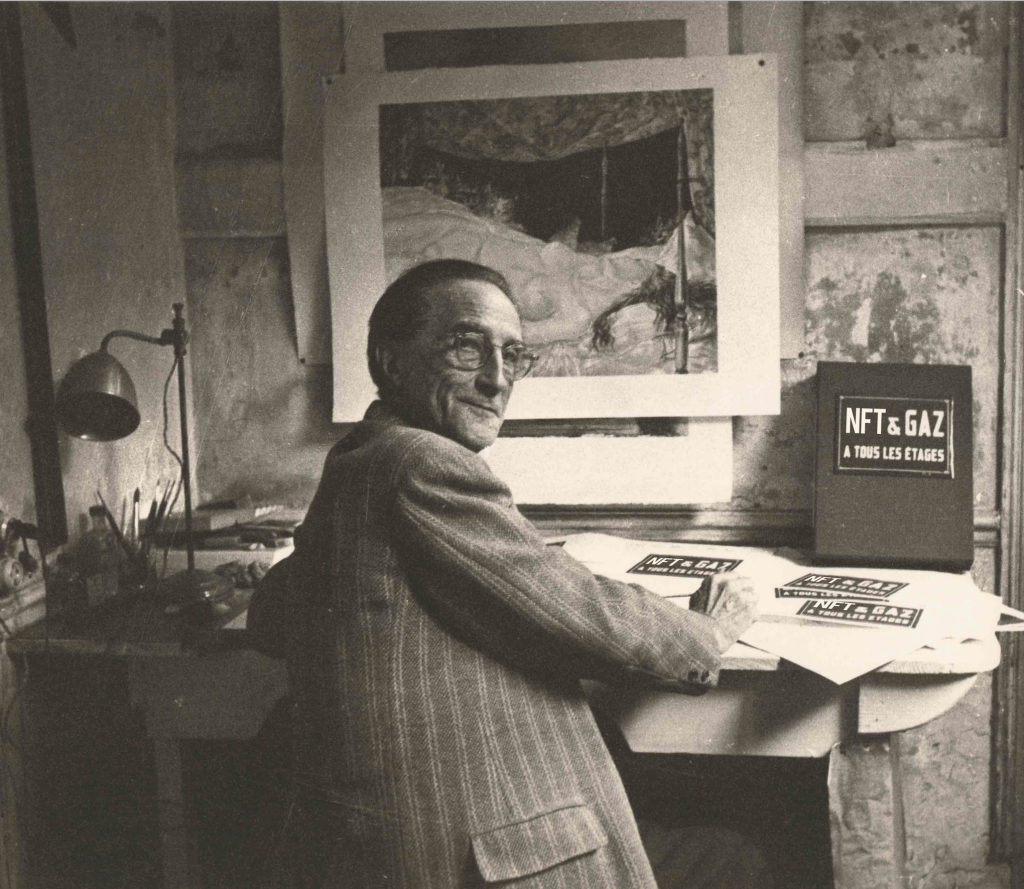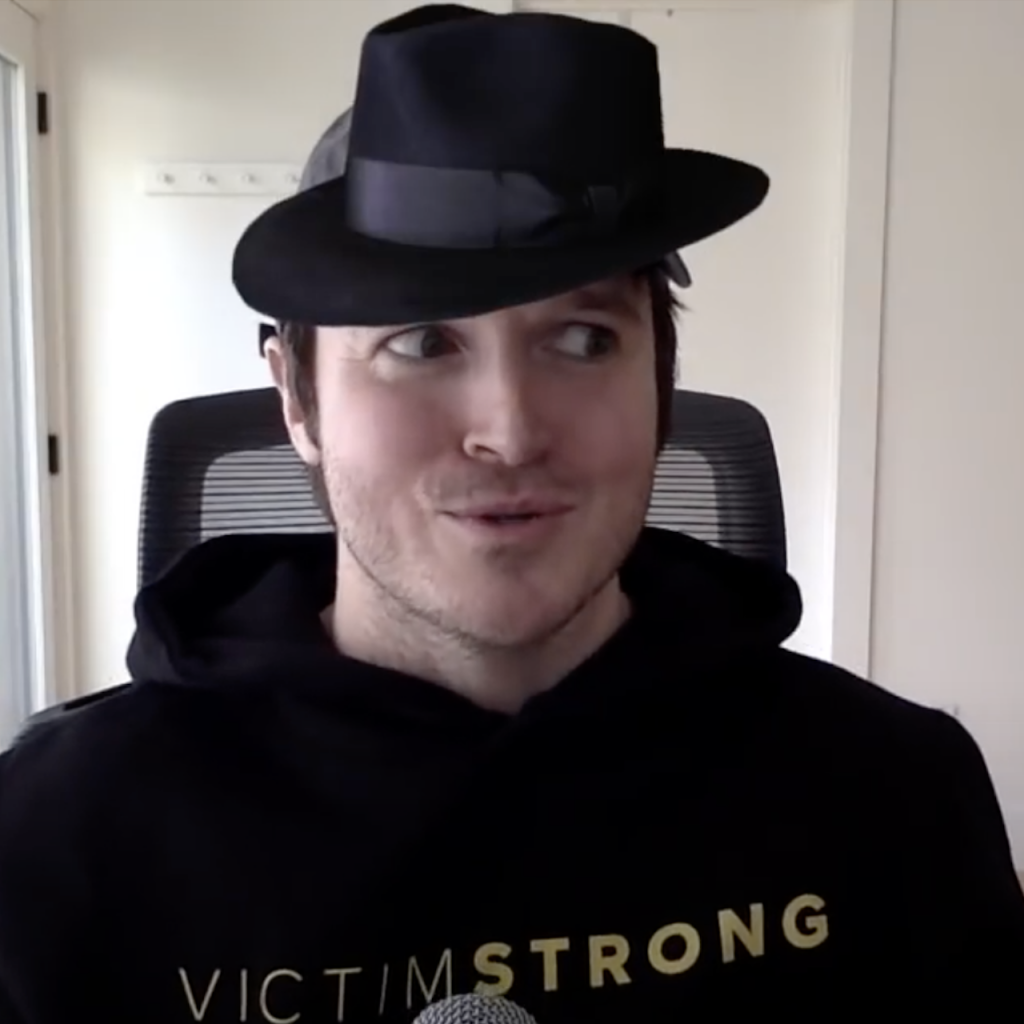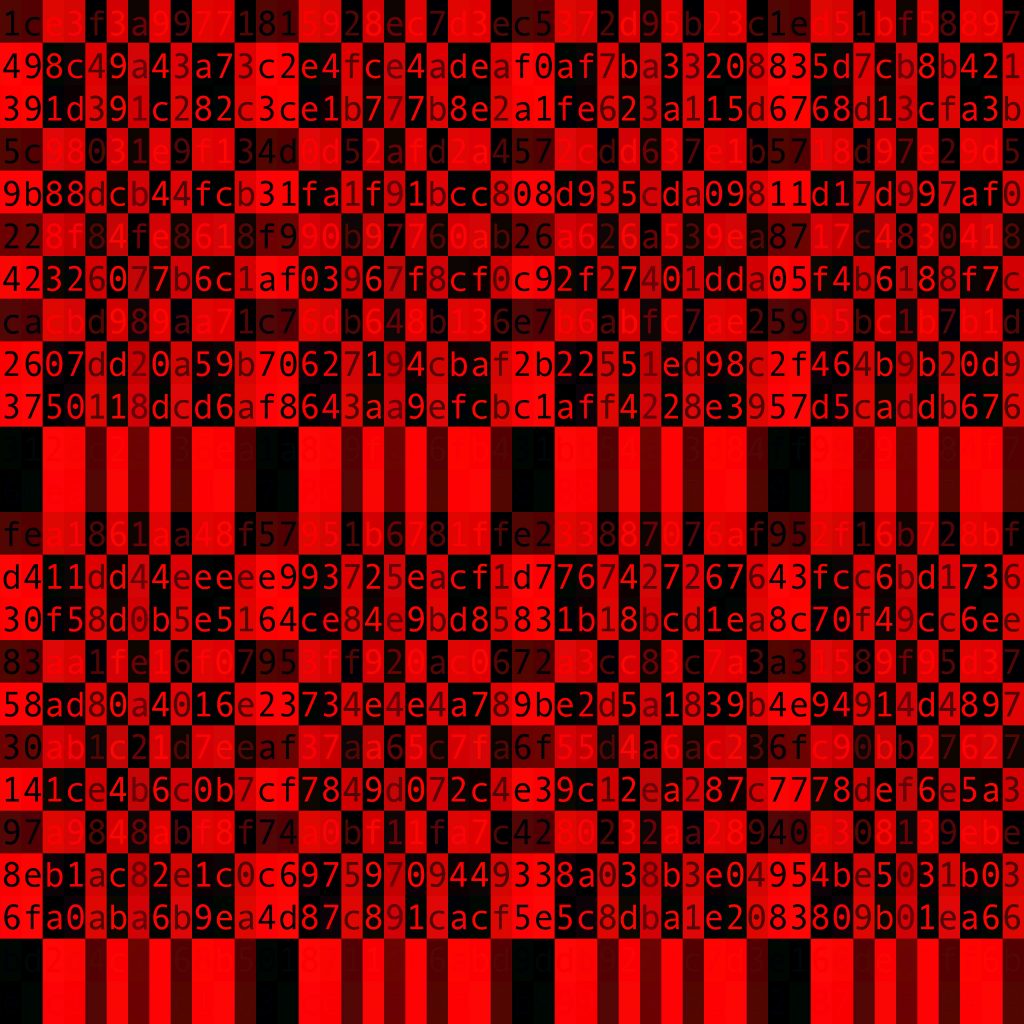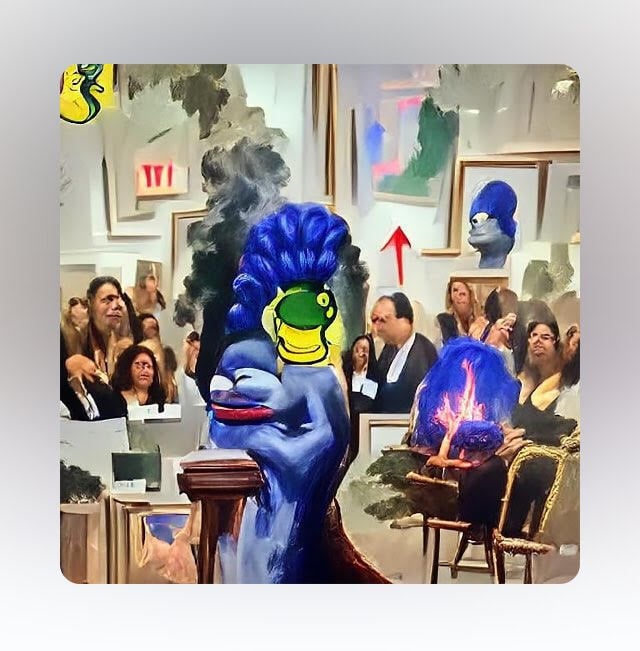Kenny Schachter
Kenny Schachter Has a Message for All You NFT Skeptics: Crypto Art Just Paid for My IRL New Apartment
Our columnist has a bone to pick with one NFT naysayer in particular.

Our columnist has a bone to pick with one NFT naysayer in particular.

Kenny Schachter

It’s now more than four years since the introduction and subsequent paroxysm of non-fungible tokens, and the art world is still suffering a bad case of sour grapes lingering like a rotten smell left behind in an elevator.
Among the worst killjoys is Brad Troemel, who hawks his vitriol on Patreon, which bills itself as a site that “helps creators and artists earn a monthly income by providing rewards and perks to their subscribers.” For forking up to $600 per year to Troemel in his top subscription tier, you not only receive the “chance to win gallery-exhibited art”—which I’m guessing didn’t sell during its first outing—you also get the opportunity to pay him for a studio visit!
At the most modest tier ($5 per month), meanwhile, you gain access to lowly “first come first serve studio visits” plus Art World Report videos, one of which you can watch for free on YouTube. So, what’s it like?

Brad Troemel complains about hustlepreneurs in his anti-NFT report created his own brand of hucksterism, available for $600 per year. Courtesy of Kenny Schachter.
With a snarky smile and singsong-y delivery fit for a QVC evangelist, Troemel launches into a blanket denigration of all things crypto, NFT, and art market-related. There are many valid observations peppered throughout his 40-minute invective. For example, in many respects the NFT game does indeed resemble a “pyramid scheme within a pyramid scheme that requires investing in speculative crypto currency for the chance to speculate in luxury art.” He gripes that holders of crypto hoodwink others into buying Ethereum to mint NFTs in the futile hope that they too can strike it Beeple-rich, creating the impression that the whole charade is legitimate by saying they are empowering artists to take control of their destiny and prosper—a mirage, at best. But well-observed as these points are, they are lost amidst the tide of sweeping generalizations.
To whit, Troemel maintains the original crypto investors—he uses term hustlepreneurs—are only perpetuating a con game and that most artists will ultimately lose money. My looming 2021 tax return begs to differ—and I’m just a hapless writer/curator/artist/
Yes, there are inexhaustible series of inexhaustible NFTs that are in fact poorly disguised substitutes for unregulated financial securities that get day-traded (sometimes intra-day-traded in a span of minutes), with JPEGs merely acting stand-ins for stock certificates in a pump-and-dump cash grab that resembles a digital mosh pit. But! More significant artists are entering the fray at a rapid clip (see below) as the field expands beyond what is still the nascent stages of a vast future marketplace.
Troemel further laments that NFTs are infinitely reproducible, so how can they be valuable? Well, so are Cindy Sherman photographs, David Hockney iPad drawings, and silkscreens pulled by Richard Prince—and no one seems to cry afoul at their valuations often totaling well into the millions. Although it may seem effortless, the same time and toil often goes into making digital art, JPEGs or otherwise. It’s just a new medium, with digital artists no better or worse than painters painting paintings.
But Tromel cannot shake the notion that the art world has been suckered into propping up crypto, and he chalks up the problem to two root causes, one of them being a crisis of connoisseurship in the art world, with American museums losing control of taste due to the debased spending habits of collectors.

Christoper Hitchens wrote a book on Mother T called The Missionary Position, and the crypto world uses NFTs to promote the blockchain as some would say Mother Teresa highlighted the plight of the poor to foster Christianity. Courtesy of Kenny Schachter.
Museums, he says, have become akin to credit-rating agencies controlled by wealthy trustees with vested interests in promoting works stashed away in their freeports—until the next transaction, that is. He here draws a parallel to hoarders of ETH bidding up worthless NFTs to lure more suckers into propping up useless crypto currencies. Troemel bemoans the fact that toys, streetwear, sneakers, and limited-edition posters, all turned into market fetishes by a cult of fandom, have replaced the role of museums altogether. I can’t argue with that! What’s worse, venerable institutions are getting their hands dirty too, like London’s Serpentine Galleries about to stage a sure-to-be box-office-busting exhibition of KAWS, the Picasso of crappy collectibles. If that isn’t reason enough to withdraw your support from Hans Ulrich & Co., I don’t know what is.
Troemel’s second root cause of all that ails us? The relationship between the art world and Silicon Valley, which has finally returned the affections of dealers who have spent decades courting tech impresarios and their oodles of endless money, Troemel thinks the we’ve been duped into playing the role of rubes, having been naïvely and unwittingly turned into a new recruitment team for crypto self-promoters. Though that may be partially true, the upside has not accrued to the cryptos alone: through my lectures, writings and podcasts which have numbered into the dozens, I have assisted onboarding hundreds of artists into the wonders of minting and selling NFTs—and in the process affording to live a life in art. They have personally told me this is the case, in no uncertain terms.
Another of Troemel’s assertions is that the ETH that underpins NFTism is never actually converted to cash, therefore making crypto-art riches largely illusory. Having just closed on my residence in New York prior to the holidays, I can attest to the wrongness of that contention. What Troemel neglects to mention is that for years prior to his hat-holding to solicit Patreon subscribers he was an early crypto adopter himself, who in 2012 embedded Bitcoins into sculptures that were soon unceremoniously destroyed by their collectors when the digital currency had an initial jolt in value that far exceeded the worth of the art. Does that explain the (computer) chip on Troemel’s shoulder when it comes to the subject?
Moving on—time to focus on the positives, too, and they’re almost too numerous to mention when it comes to working artists. Martin Lucas Ostachowski, an artist and internet chronicler has compiled the definitive history of blockchain art (both before and after NFTs) points out that some artists are even using the medium for activism. “Mexican artist Lucho Poletti for instance, analyzed propaganda art and used its language to create multi-language artworks to educate about cryptocurrencies,” he writes.
Simon de la Rouviere, meanwhile, created This Artwork Is Always on Sale (2019), which requires the owner “to pay an annual 5 percent patronage fee based on the last purchasing price,” Ostachowski writes.
Then there’s artist Jonas Lund, who launched his own Jonas Lund Token (JLT), which is broken up into 100,000 shares to gives owners—shareholders, really—the chance to vote on the future of his practice. “Similar to a corporation, one share equals one vote and owners of the tokens become part of the Jonas Lund’s board of trustees and will be consulted each time a strategic decision needs to be made,” Lund’s gallery, Roehrs & Boetsch, states. “By creating 100,000 shares that gives each shareholder influence and agency over his artistic practice, and giving up his majority share, Lund is interested in subverting the traditional power structures that informs the contemporary art world.”
Similarly, Kevin Abosch tokenized himself into 10 million works of art on the Ethereum blockchain in January 2018. His works are often coded with hidden meanings and messages, but he also has a hell of a color sense, and the works operate aesthetically as well.

Kevin Abosch: he speaks in code but has an unusual sense of aesthetics for and 1s-and-0s guy.
These are entirely new ways of making art, and they take into account new opportunities and realities. Alysia Courtney Davis, who works under the name 8bit_titty, is a multimedia artist focused on Artificially Intelligent generated imagery. Themes of identity and sexuality permeate invented situations and memories. As part of her process, her artist statement was created by an online generator (maybe I should write my articles in the same fashion). Some platforms are also trying to take into account bigger-pictures problems: The Tezos blockchain, which claims to make no adverse environmental impact, could be a model for the future of crypto currencies and NFTs alike.

8bit_titty she is as raw as remarkable, and best of all are her titles, like Rare Pepe Marge Simpson smoking meth at Christie’s Auction House. Courtesy of Kenny Schachter.
There’s also a healthy infrastructure springing up around NFTs—take, for example, the Center of Art and Media Museum (ZKM) in Karlsruhe, Germany, which is at the forefront of exhibiting and collecting digital art. In the 2017 exhibition “Open Codes,” organized by ZKM IT specialist Daniel Heiss (who I Zoomed with recently), the museum set up a miniature Bitcoin mining farm and distributed the proceeds to the artists who helped shepherd them into crypto art and initiate the museum’s groundbreaking NFT collection. The ZKM has also sold some NFTs to subsidize further acquisitions.
On a less happy note, Heiss was transferring two CryptoPunks between the museum’s wallets when he accidentally sent them to an irretrievable ETH address. The two Punks, worth a fortune, are now forever stuck in the smart contract address of Larva Labs, the Punks’ creators—a digital no man’s land where they are both alive (i.e., viewable online) and dead (they can’t be moved… ever). So it goes on the blockchain.
I wouldn’t be me if I neglected to mention my own efforts in the field, most recently “METADADA,” which inaugurated the new Crypto Kiosk of Nagel Draxler Gallery in Berlin when it opened last week. Richard Prince termed my installation (in an Instagram comment) “post place.”

An installation view of “METADATA” at Nagel-Draxler. Courtesy of Kenny Schachter.
A survey of my recent paintings, sculptures, videos, photographs, and an installation, all derived from digital files, it showcases works that employ humor, comment on NFTism, and give form to ideas and experiences codified on the blockchain. Anyone who buys a file has the opportunity to render it in the real world however they see fit: a Duchampian readymade, only a had-it-made.
A fascinating (revolutionary?) aspect of the whole enterprise is that, because I control the tokens on offer, it turns the traditional artist-gallery relationship upside down: rather than the artist’s historical reliance on being paid by the gallery, the gallery has to wait for me to pay them.
Doesn’t that have a nice ring to it? During the opening, whenever I was asked questions about what was afoot, a ring of people would inevitably congregate around me, the likes of which I never experienced at an opening before. Besides the give-and-take exchanges that took place, the audience was comprised of artists, collectors, critics, and coders and mathematicians. I’ve also never seen such disparate people, from all walks of life, to have coinciding interests, beyond the norm of gallery-goers sporting art blinders. Sorry, Troemel, I remain more crypto-enthusiastic than ever.